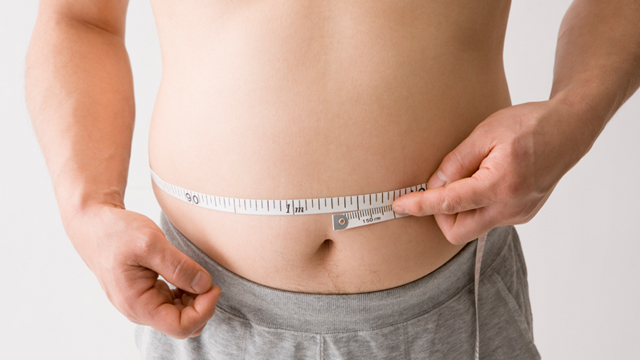Insulin, it’s the hormone that helps us unlock energy from food, but too much of it can have a negative impact on our health. Nutritionist and exercise physiologist Caitlin Reid reveals why insulin can be such a problem for our health.
Belly fat indicates a bigger problem than being uncomfortable in our skinny jeans; it’s a risk factor for chronic diseases such as heart disease, diabetes and some types of cancer.
According to the National Health and Medical Research Council, for good health females need to keep their waistlines below 80cm, while males should keep theirs below 94cm. Larger waistlines indicate more fat around the vital organs, which interferes with how our body uses the hormone insulin. This is where the problems start.
What is insulin?
When everything is working normally, insulin plays a special role in helping our cells take energy from food. After a meal, our blood glucose levels rise and insulin is released from our pancreas. Insulin dictates the amount of glucose our cells get for energy and how much of our glucose is stored in the muscle and liver as glycogen.
When our blood glucose levels drop back to normal, insulin is no longer needed. Overeating, high body fat levels and physical inactivity can make our body resistant to the effects of insulin, producing a condition called insulin resistance.
Insulin resistance — what’s the big deal?
When cells become resistant to insulin, not as much glucose enters the cell causing blood glucose levels to remain high. The pancreas then has to pump out more insulin to do the same job. Insulin stimulates fat storage, as it promotes the use of glucose as a fuel store. Fat is an active tissue that secretes hormones. When fat stores grow, this hormonal balance is disrupted causing fats cells to release higher amounts of fatty acids, which promotes fat storage in non-fatty tissues such as muscle and liver. It’s a vicious cycle: the more fat you pile on, the more insulin resistant your muscles and liver become.
Related: How can you cut diabetes risk?
How do I fix it?
Improving your diet and moving more can help reduce insulin resistance. Changing the type of carbohydrate you eat (from those with a high glycaemic index (GI) such as white bread, jasmine rice, soft drinks and lollies to low-GI carbs such as wholegrain bread, basmati rice, low-fat milk and yoghurt and pasta) can control blood glucose levels, which reduce the amount of insulin needed. A low-GI diet should be combined with a kilojoule-restricted diet and smaller portion sizes to promote weight loss.
Ensure you also get plenty of exercise, aiming for 60 to 90 minutes daily. For the best results, combine interval training with resistance training, as this will help to promote muscle mass and burn off more kilojoules. The more muscle you have, the easier it is for insulin to do its job and the more glucose that is taken up from your bloodstream.
You say: Do you find it hard to shift the belly fat?




